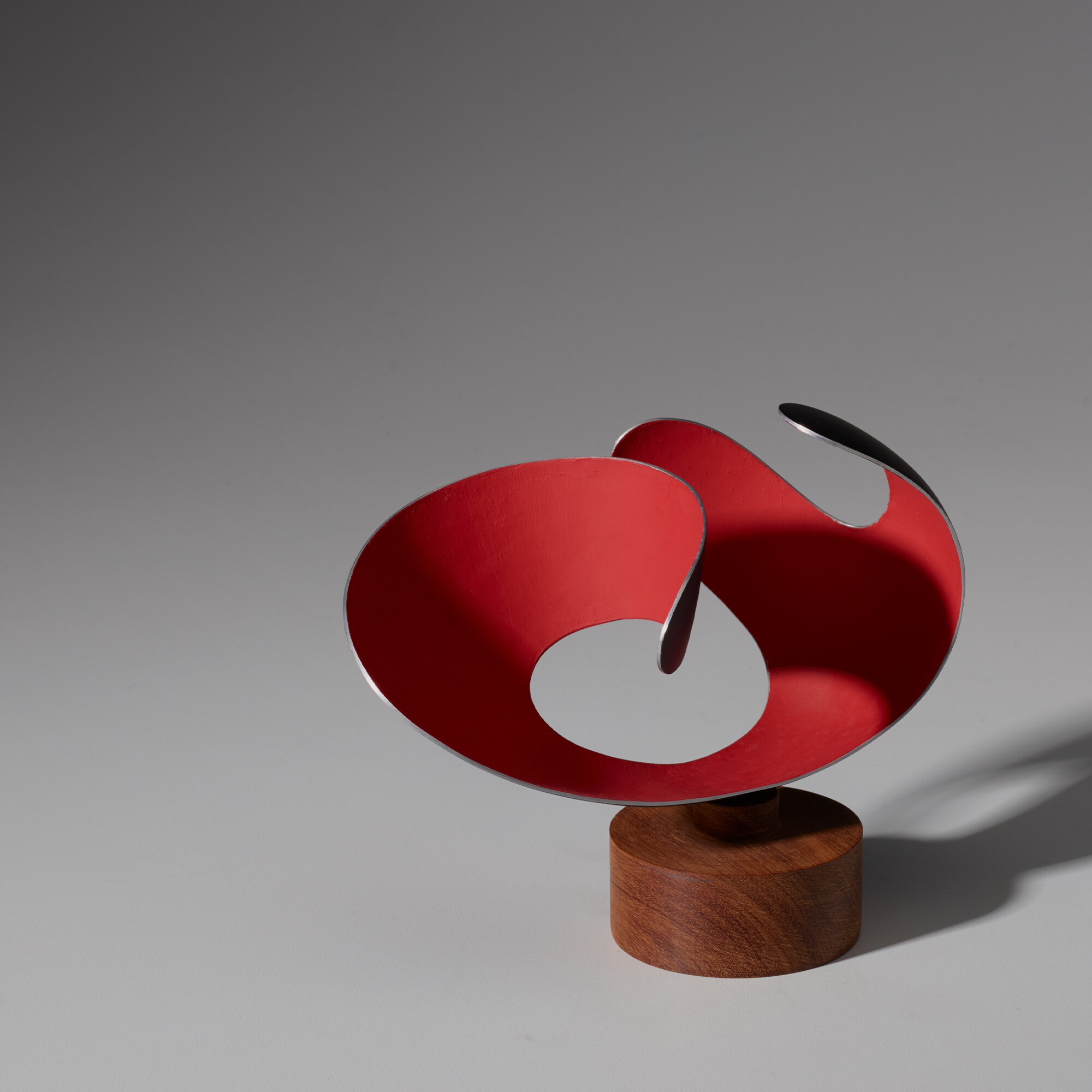190
190
c. 1930
pastel on rice paper 12½ h × 12 w in (32 × 30 cm)
pastel on rice paper 12½ h × 12 w in (32 × 30 cm)
estimate: $700–900
result: $813
follow artist
provenance: Estate of José de Rivera
José de Rivera’s career as an artist evolved from a natural place of confidence and curiosity that set him on a path of aesthetic exploration at a young age. Most well-known for his graceful, curvilinear sculptures, de Rivera approached his artistic practice with a calm matter-of-factness that is visible in his work. Geometric, voluminous and direct, his compositions use just enough to communicate so much. The gentle bend of a line, the play of light on stainless steel and the tension of right angles give his work intention, an ability to express an experience while encompassing the space around them.
Geometric, voluminous and direct, his compositions use just enough to communicate so much.
De Rivera was born in West Baton Rouge in 1904 and his father worked as an engineer on a sugar plantation. Growing up in the rural parish, he became familiar with machinery and tool making as a mill operator. A bit of a rambling young man, de Rivera enjoyed late nights in New Orleans listening to “alligator music” and when his brother invited him to Chicago, he seized the opportunity. De Rivera found work in various machine shops and explored the city’s museums during time off. He encountered Egyptian art at the Field Museum, an experience which he credits with “firing his imagination”. At the suggestion of a friend, de Rivera enrolled in night classes at the Studio School of Fine Art. He studied calligraphy and lettering, but it was a life-drawing class taught by muralist John Norton where his interest in sculpture began to ferment. After a year abroad in Europe and North Africa, de Rivera settled in New York in 1932 to become an artist fulltime.

De Rivera became involved with the Works Progress Administration (WPA) and the Federal Arts Project, completing various commissions throughout the 1930s and 40s. His highly-stylized, yet naturalistic work from this period would gradually become more reductive. The forms became more planar, lines more expansive. Breaking free from a central axis, de Rivera’s sculptures twisted and hugged the space around them. In the mid-1950s, he began to draw-out the lines even further, creating swirling, polished metal sculptures that glimmer and loop in space. In his later years, de Rivera began painting. What could be seen as a departure from his sculptural works were actually a return to basic principles. His two-dimensional compositions generate the same spatial tension by using ridged geometric elements, the flattened volumes creating a sense of space without perspective, saying more while using less.
The works offered in this collection are exemplary of de Rivera’s long career and illustrate his artistic evolution.
The works offered in this collection are exemplary of de Rivera’s long career and illustrate his artistic evolution. Early studies from the 1930s show the artist kneading and pulling dense forms on paper. Untitled (Red and Black) peels the shape into three-dimensions, scooping and whirling in space while his later Constructions—sleek and graceful—draw lines in the air. The collection of Working Models provide further insight into de Rivera’s exploration of space and form. Created as teaching aids during his time at Yale, he encouraged his students to “investigate three-dimensional perception” with the models as their guide. Finally, de Rivera’s paintings show an artist coming full-circle, refining and concentrating his explorations into elemental purity.


My notion is that the primary function of the artist is the creation and production of work. The second function is showing it. I don't belong to any particular period or school - my job is to make work and then project the experience that I have.
José de Rivera
Auction Results José de Rivera
Design
11:00 am ct